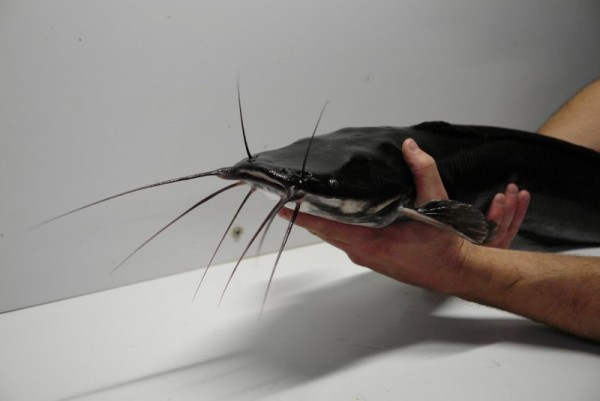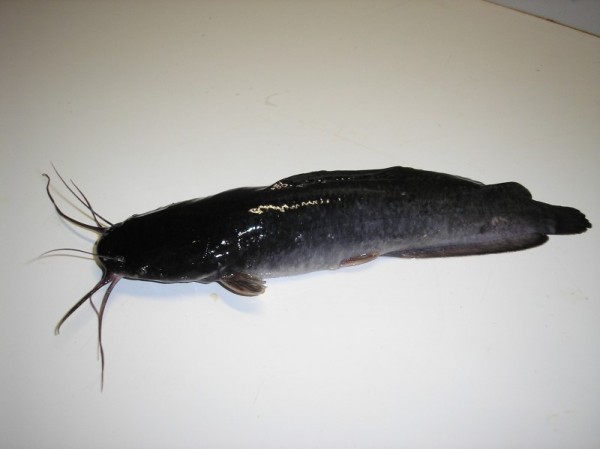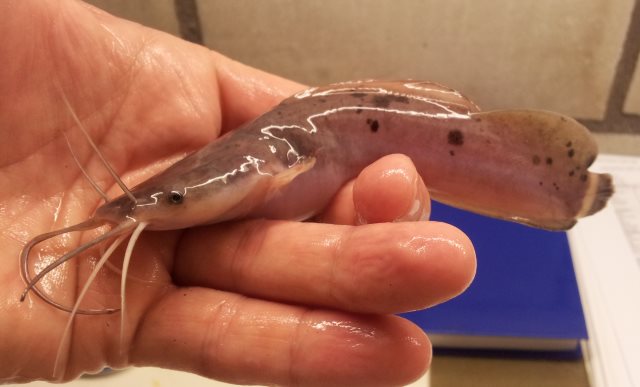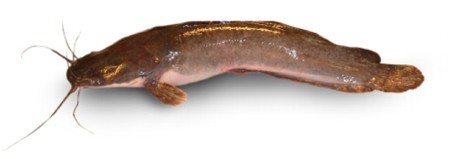The introduction of African catfish in Europe dates back to 1976 when it was first introduced in the Netherlands. The initial broodstock consisted of 40 African catfish that were brought from the Central African Republic. Commercial farming of this species began in 1985, primarily using recirculation aquaculture systems (RAS).
Over time, catfish strains from Israel and the Republic of South Africa were introduced, and these strains were crossed to produce fingerlings of the “Dutch strain” African catfish, which is commonly cultured today.
At the farmer’s level, broodstock selection is often carried out in a rudimentary manner. Maintaining and monitoring separate populations of different African catfish strains for extended periods is a costly endeavor. The results, if successful, become apparent after several years, posing the challenge of maintaining this advantage exclusively for the commercial farmer.
Another challenge faced by catfish fingerling producers is demonstrating the benefits of an improved strain to customers. While researchers may consider a 5% improvement in growth and feed conversion ratio as significant achievements, farmers often perceive small differences that may go unnoticed without proper farm recordkeeping.
In practice, the market for African catfish fingerlings is primarily driven by price. Hatcheries also focus on factors such as availability, size, uniformity, and the health status of African catfish.
The majority of African catfish farmers, both in tropical regions and Europe, are small to medium-sized and lack proper organization. They often lack the necessary resources and capabilities to conduct extensive research on genetic improvements for their stocks. The limited research on African catfish genetics has mainly been conducted by universities but has yet to be effectively implemented in practical farming operations.
Selection of African catfish broodstock
The African catfish farming industry is relatively new, with its beginnings in Europe in the early 1980s and only a few farmers in Africa being actively involved in extensive farming at that time.
The African catfish farming industry is a relatively recent development. In Europe, it began in the early 1980s, while in Africa, only a few farmers were involved in extensive farming at that time. Initially, the broodstock for farming was obtained from the wild. For instance, in the Netherlands, wild African catfish were imported from Central Africa, and the early generations were selected based on growth characteristics. In my personal opinion, this selection process aimed to identify fish that could adapt to the intensive farming methods used in warm water recirculation systems. Shortly after the introduction of African catfish from Central Africa, fish from Israel and RSA (Republic of South Africa) were also imported. In the Netherlands, these different strains were not kept separate, resulting in the “Dutch African catfish,” which is a combination of three strains.

The processing industry places significant importance on meat quality and dress-out percentage. Variations in these parameters are observed among the strains from different locations in Africa. In tropical regions, meat quality and dress-out percentage are of less importance since the fish is typically consumed whole, without filleting, and there is no wastage of heads and intestines.
Hybridisation of African catfish
Intergeneric hybrids have been successfully produced within the Clariidae family (Siluriformes) by breeding species from the genera Heterobranchus and Clarias (Ref.). One well-known intergeneric hybrid is the crossbreed between a male Heterobranchus longifillis and a female Clarias gariepinus, commonly referred to as “Hetero-clarias” (see photo below). These intergeneric hybrids exhibit characteristics inherited from both parent species due to the recombination of genetic material.



In our former Netherlands-based hatchery, we specialize in producing this hybrid species for a group of farmers associated with a processing plant. This group is particularly interested in the production and marketing of this unique fish. The fillets of Hetero-clarias are white, unlike the pinkish/reddish color of Clarias gariepinus fillets, and they contain approximately 30% more fat, which enhances the taste. Additionally, the hybrids have significantly reduced and inactive gonads. As a result, the dressing percentage of Hetero-clarias is relatively high compared to Clarias gariepinus. The white fillets of Hetero-clarias can serve as a viable alternative to fillets from marine fish species.

Benefits of catfish hybridisation
As a fingerling producer of Heteroclarias, we have observed significant behavioral differences compared to the common African catfish. Heteroclarias fingerlings exhibit a wide variation in growth, and we have noticed a high occurrence of cannibalism, especially when regular grading is neglected. Additionally, Heteroclarias is prone to stress, requiring careful management. However, after reaching 12 weeks of age, well-graded fish display consistent growth and low mortality rates, ultimately reaching a harvest weight of 1.4 kg.
In tropical regions, Heteroclarias is considered superior to Clarias gariepinus in terms of growth in pond culture, making it a preferred choice for fish farmers seeking better growth performance.
Hybridization offers significant benefits for fingerling producers. The resulting hybrids are infertile, ensuring that customers cannot continue breeding them. The pure parent stock of Heteroclarias is carefully maintained on our farm and is never shared with other farmers. It is worth noting that the pure Heterobranchus longifillis strain reaches sexual maturity at a later age of 2 years, which is considerably longer compared to Clarias gariepinus, which typically matures at 1 year.
Maintaining healthy brood stock
The primary objective of maintaining good brood stock is to obtain high-quality eggs and sperm. To achieve this, it is crucial to individually tag the brood stock, enabling traceability for each batch of offspring and facilitating the implementation of a breeding program. Individual tagging also facilitates proper record-keeping, as it allows for accurate documentation of the brood stock’s recovery time between spawning events.
For various reasons, it is essential to keep the brood stock separate from other farm activities. This separation serves to:
- Minimize stress and prevent the transmission of diseases to the brood stock.
- Optimize their environment by ensuring a constant light regime and maintaining consistent water quality, thereby supporting a year-round reproductive cycle.
Ideally, we prefer employing recirculation systems in enclosed areas with temperature control, if necessary. However, in tropical regions, flow-through systems can also be effective if supplied with high-quality water from boreholes and appropriately flushed.
Fecundity of female catfish
The fecundity of female fish, expressed as a percentage of their body weight, typically ranges between 5-15%. As the size of the female increases, the egg size tends to increase as well. Larger African catfish broodstock fish have a lower number of eggs per gram compared to smaller individuals. On average, we count around 500 eggs per gram. The average females used in our farm weigh around 6 kg and produce approximately 300-600 grams of eggs per female, which translates to 150,000-300,000 eggs.
To select a female fish, one is chosen from the broodstock fish tanks. Using a small tube, it is possible to extract a sample of eggs from the ovaries to check if the nucleus has migrated to the side and if the egg size has reached a diameter of 1 mm or above. While many farmers rely on visual selection alone, this sampling procedure ensures greater accuracy.
In captivity, females do not undergo final ripening of the eggs without hormonal treatment. Injecting gonadotropin-releasing hormone, either from natural pituitary glands or synthetic products like OVAPRIM, induces the last stage of ripening known as vitellogenesis. During this stage, the eggs develop yolk and absorb water.

The time between hormone injection and egg stripping depends on the water temperature and the type of hormone used. Through trial and error, the optimal timing for stripping can be determined.
- Stripping too early results in a dry mass of eggs that are difficult to extract as they do not flow out easily. The female fish often experiences stress and internal injuries, which may lead to its death.
- Stripping too late results in a fluid-like mass of eggs. In such cases, the female may have already released a significant number of eggs in the preparation tank, making the stripping process effortless.
A few hours after the initial stripping, a final stripping is performed to remove any remaining ripe eggs from the ovaries of the female. This is crucial to prevent the ripe eggs from deteriorating inside the ovaries, which can harm the fish and potentially lead to the death of the African catfish broodstock female. The females need to undergo a recovery period of several days before being returned to the broodstock tank.
Fecundity of male catfish
Unlike other fish species, male African catfish do not release sperm after hormone treatment. Instead, they possess ripe sperm throughout the year. To collect the sperm, farmers typically sacrifice males and dissect their testes. However, this practice poses a challenge for genetic programs as new male broodstock needs to be continuously added to the population. Some farmers opt for a surgical procedure on the males. After tranquilizing the fish, a small incision is made in the belly to extract sperm from the testes using a syringe. The incision is then stitched with veterinary material, allowing the male to recover within one to two weeks as the wound closes.
Unlike mammalian sperm, fish sperm is not initially active but becomes activated upon contact with water. Its activity lasts for less than a minute, necessitating quick fertilization before the sperm’s energy depletes. To prevent accidental activation, all materials, hands, and the fish should remain dry during the sperm collection process. Nevertheless, the sperm concentration in good males can exceed a million per milliliter.
Eggs and sperm are collected in separate dry glass or porcelain containers. One simple and effective fertilization method involves gently mixing the eggs and sperm together in the egg collection bowl before adding water.
While some literature suggests the use of specific fertilizing solutions to enhance sperm longevity and improve fertilization rates, I personally prefer not to use additional fluids as they can introduce handling complications.
Artificial propagation of African catfish is a relatively straightforward procedure, and many farmers have developed expertise in this area. Millions of larvae are hatched weekly in countries like Nigeria. However, a consistent challenge remains the scarcity of high-quality fingerlings and juveniles. While the process of reproduction in African catfish follows a defined procedure, successfully farming the larvae to the juvenile stage relies on the capabilities of individual farmers.
Life span of African catfish broodstock
In our hatchery, we strive to maximize the lifespan of our African catfish broodstock to minimize the need for costly replacements. Male broodstock can be utilized anywhere from one time (in the case of sacrificing the male) to up to four times (if the operation procedure is employed) before they are replaced with new, younger males. It is worth noting that males above the age of four years tend to develop testes with sponge-like tissue, resulting in watery sperm with a low concentration of sperm cells.
On the other hand, female broodstock can be utilized for an extended period and maintain better overall condition, especially when they are used a maximum of twice per year. Females have the capacity to reach larger sizes and weights compared to males, with a maximum weight of 15 kg and a length of 1.30 meters. It is advisable to rear the next generation of broodstock in a separate system.